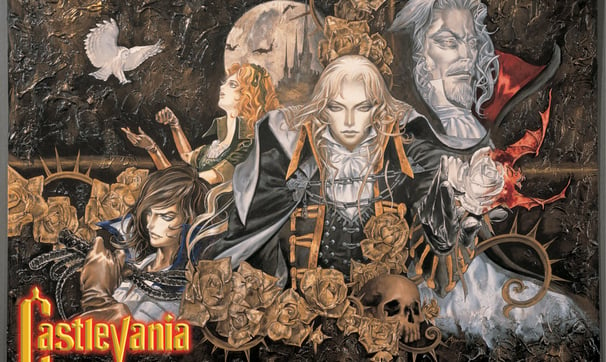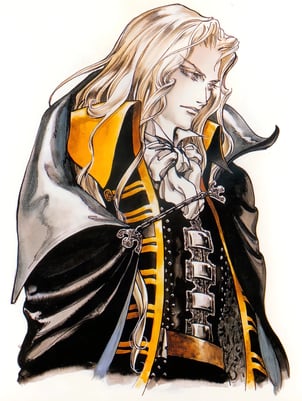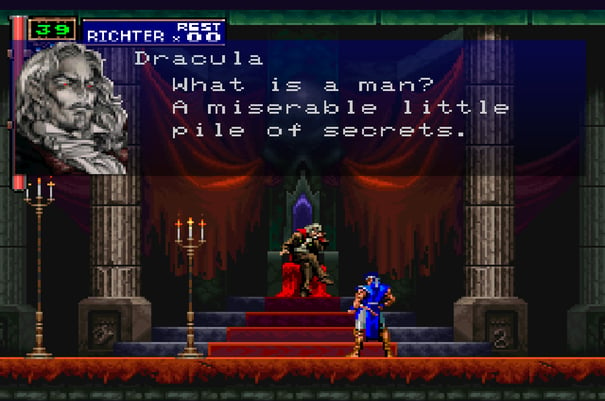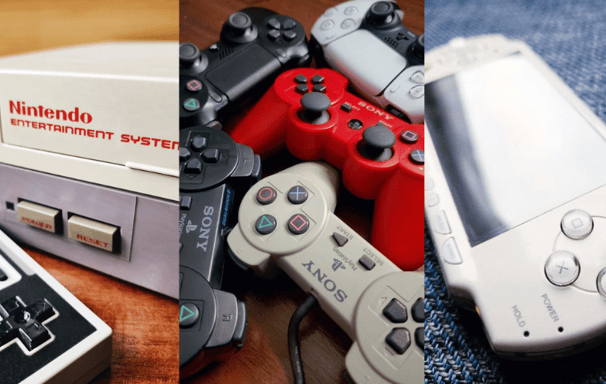Not Another Dracula Story: It’s Castlevania: Symphony of the Night


Soo! Who got reeled in by the Neflix Series?! Come on SAY ITT!! AND YES!!! I’m the type of writer who likes to focus on sequels! HA HA!
Without further ado! Let’s talk about this well-loved game from the 90s!
Castlevania: Symphony of the Night. Released in 1997 by Konami, this iconic game has not only captured the attention of gamers but also set a benchmark for the genre known as Metroidvania. As we talk about the world of Symphony of the Night, we'll explore its enduring appeal, unique gameplay, and why it remains an undisputed entry to the Castlevania series!
This game emerged during a pivotal era in gaming history. At a time when 3D graphics were becoming the norm, this title dared to stick with a 2D side-scrolling format. The decision to maintain this classic style was a bold move by Konami, but it paid off in spades. The game was a direct sequel to Castlevania: Rondo of Blood, and it brought with good storytelling, sexy pixel artwork, and a haunting yet beautiful soundtrack.
So how is it different from the previous games??
Unlike its predecessors, Symphony of the Night embraced an open-ended exploration system. Players navigated through Dracula’s labyrinthine castle, discovering hidden rooms, secret passages, and valuable power-ups. This non-linear approach was a departure from the level-based structure of previous titles, encouraging players to explore every nook and cranny.
The introduction of RPG elements was another innovative aspect. Players could level up the game's protagonist, by defeating enemies and collecting experience points. Additionally, the game featured a vast inventory of weapons, armor, and magical items, allowing for a highly customizable gameplay experience.
Even in its 2D format, Symphony of the Night pushed the boundaries of what was possible in terms of art and sound design. The gothic visuals were meticulously crafted, creating an atmospheric backdrop that perfectly complemented the game’s eerie and immersive soundtrack.
I’m also not kidding about the soundtrack since I can listen to the main menu music for hours!
Over two decades since its release, Castlevania: Symphony of the Night continues to be a benchmark for quality in gaming. But what exactly contributes to its legacy?
At its core, Symphony of the Night is a story-driven game. Players follow Alucard, the son of Dracula, as he attempts to thwart his father's resurrection. This is also the first time that a non-Belmont family member was made protagonist!
Just look at this Beautiful specimen:
Castlevania: Symphony of the Night has had a profound influence on modern gaming, particularly in the indie game scene. Its gameplay mechanics and design philosophy have inspired numerous developers to create their own Metroidvania-style games. Games like Hollow Knight and Ori and the Blind Forest have drawn heavily from the Metroidvania blueprint that Symphony of the Night helped to define. It’s quite hard to explain further since it will be a lot easier just to experience what I’m saying by playing the game!
This is part of my Mount Rushmore when it comes to PlayStation games. So, what are you waiting for? Play it again or get your copy now!!! It’s also best played with your trusty CRT Television to experience the wholeness of the game!

The narrative unfolds through carefully placed dialogue and cutscenes, keeping players invested in the story. The depth of the characters and the intricacies of the plot are still praised by players and critics alike. It’s also renowned for its replayability. The game is filled with secrets, multiple endings, and hidden characters. This encourages players to revisit the game multiple times, each playthrough offering a new discovery or challenge. The inverted castle, a hidden second half of the game, is a perfect example of the surprises that await diligent explorers.
Here's a snippet of my favourite quote:
Dracula: “What is a man? A miserable little pile of secrets.”




Soo! Who got reeled in by the Neflix Series?! Come on SAY ITT!! AND YES!!! I’m the type of writer who likes to focus on sequels! HA HA!
Without further ado! Let’s talk about this well-loved game from the 90s!
Castlevania: Symphony of the Night. Released in 1997 by Konami, this iconic game has not only captured the attention of gamers but also set a benchmark for the genre known as Metroidvania. As we talk about the world of Symphony of the Night, we'll explore its enduring appeal, unique gameplay, and why it remains an undisputed entry to the Castlevania series!
This game emerged during a pivotal era in gaming history. At a time when 3D graphics were becoming the norm, this title dared to stick with a 2D side-scrolling format. The decision to maintain this classic style was a bold move by Konami, but it paid off in spades. The game was a direct sequel to Castlevania: Rondo of Blood, and it brought with good storytelling, sexy pixel artwork, and a haunting yet beautiful soundtrack.
So how is it different from the previous games??
Unlike its predecessors, Symphony of the Night embraced an open-ended exploration system. Players navigated through Dracula’s labyrinthine castle, discovering hidden rooms, secret passages, and valuable power-ups. This non-linear approach was a departure from the level-based structure of previous titles, encouraging players to explore every nook and cranny.
The introduction of RPG elements was another innovative aspect. Players could level up the game's protagonist, by defeating enemies and collecting experience points. Additionally, the game featured a vast inventory of weapons, armor, and magical items, allowing for a highly customizable gameplay experience.
Even in its 2D format, Symphony of the Night pushed the boundaries of what was possible in terms of art and sound design. The gothic visuals were meticulously crafted, creating an atmospheric backdrop that perfectly complemented the game’s eerie and immersive soundtrack.
I’m also not kidding about the soundtrack since I can listen to the main menu music for hours!
Over two decades since its release, Castlevania: Symphony of the Night continues to be a benchmark for quality in gaming. But what exactly contributes to its legacy?
At its core, Symphony of the Night is a story-driven game. Players follow Alucard, the son of Dracula, as he attempts to thwart his father's resurrection. This is also the first time that a non-Belmont family member was made protagonist!
Just look at this Beautiful specimen:
Castlevania: Symphony of the Night has had a profound influence on modern gaming, particularly in the indie game scene. Its gameplay mechanics and design philosophy have inspired numerous developers to create their own Metroidvania-style games. Games like Hollow Knight and Ori and the Blind Forest have drawn heavily from the Metroidvania blueprint that Symphony of the Night helped to define. It’s quite hard to explain further since it will be a lot easier just to experience what I’m saying by playing the game!
This is part of my Mount Rushmore when it comes to PlayStation games. So, what are you waiting for? Play it again or get your copy now!!! It’s also best played with your trusty CRT Television to experience the wholeness of the game!
The narrative unfolds through carefully placed dialogue and cutscenes, keeping players invested in the story. The depth of the characters and the intricacies of the plot are still praised by players and critics alike. It’s also renowned for its replayability. The game is filled with secrets, multiple endings, and hidden characters. This encourages players to revisit the game multiple times, each playthrough offering a new discovery or challenge. The inverted castle, a hidden second half of the game, is a perfect example of the surprises that await diligent explorers.
Here's a snippet of my favourite quote:
Dracula: “What is a man? A miserable little pile of secrets.”





Related Stories
Join our retro gaming community and get weekly updates, deep dives, and hidden gems—straight to your inbox!


